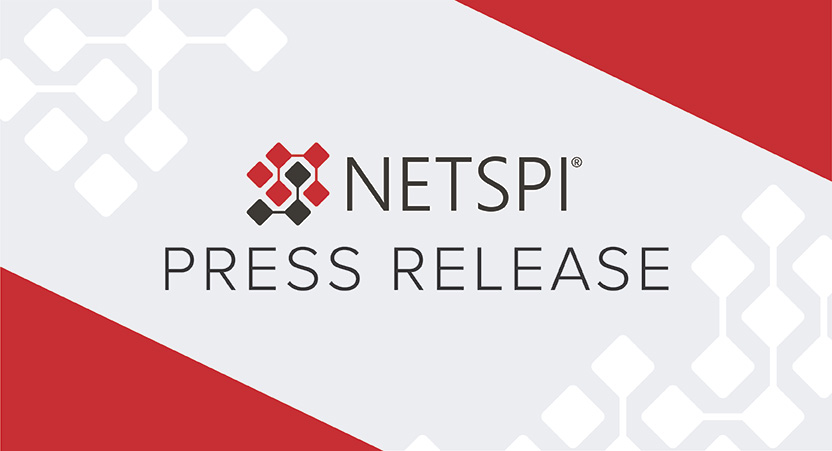SecurityWeek: Cyber Insights 2023: Cyberinsurance
On January 31, NetSPI Scott Sutherland, VP of Research, and Norman Kromberg, CISO, were featured in the SecurityWeek article called Cyber Insights 2023: Cyberinsurance. Read the preview below or view it online.
+++
SecurityWeek Cyber Insights 2023 | Cyberinsurance – Cyberinsurance emerged into the mainstream in 2020. In 2021 it found its sums were wrong over ransomware and it had to increase premiums dramatically. In 2022, Russia invaded Ukraine with the potential for more serious and more costly global nation state cyberattacks – and Lloyds of London announced a stronger and more clear war exclusions clause.
Higher premiums and wider exclusions are the primary methods for insurance to balance its books – and it is already having to use both. The question for 2023 and beyond is whether the cyberinsurance industry can make a profit without destroying its market. But one thing is certain: a mainstream, funds rich business like insurance will not easily relinquish a market from which it can profit.
It has a third tool, which has not yet been fully unleashed: prerequisites for cover.
The Lloyd’s war exclusion clause and other difficulties
The Lloyd’s exclusion clause dates to the NotPetya incident of 2017. In some cases, insurers refused to pay out on related claims. Josephine Wolff, an associate professor of cybersecurity policy at Fletcher, Tufts, has written a history of cyberinsurance titled Cyberinsurance Policy: Rethinking Risk in an Age of Ransomware, Computer Fraud, Data Breaches, and Cyberattacks.
“Merck and Mondelez, sued their insurers for denying claims related to the attack on the grounds that it was excluded from coverage as a hostile or warlike action because it was perpetrated by a national government,” she explains. However, an initial ruling in late 2021, unsealed in January 2022, indicated that if insurers wanted to exclude state-sponsored attacks from their coverage they must write exclusions stating that explicitly, rather than relying on boilerplate war exclusions. Merck was granted summary judgment on its claim for $1.4 billion.
The Russia/Ukraine kinetic war has caused a massively increased expectation of nation state-inspired cyberattacks against Europe, the US, NATO, and other west-leaning nations. Lloyds rapidly responded with an expanded, but cyberinsurance-centric, war exclusion clause excluding state-sponsored cyberattacks that will kick in from March 2023.
Insurers’ response
2023 is a watershed moment for cyberinsurance. It will not abandon what promises to be a massive market – but clearly it cannot continue with its makeshift approach of simply increasing both premiums and exclusions to balance the books indefinitely.
Nevertheless, the expansion of ‘prerequisites’ would be a major – and probably inevitable – evolution in the development of cyberinsurance. Cyberinsurance began as a relatively simple gap-filler. The industry recognized that standard business insurance didn’t explicitly cover against cyber risks, and cyberinsurance evolved to fill that gap. In the beginning, there was no intention to impose cybersecurity conditions on the insured, beyond perhaps a few non-specific basics such as having MFA installed.
But now, comments Scott Sutherland, VP of research at NetSPI, “Insurance company security testing standards will evolve.” It’s been done before, and PCIDSS is the classic example. The payment card industry, explains Sutherland, “observed the personal/business risk associated with insufficient security controls and the key stakeholders combined forces to build policies, standards, and testing procedures that could help reduce that risk in a manageable way for their respective industries.”
He continued, “My guess and hope for 2023, is that the major cyber insurance companies start talking about developing a unified standard for qualifying for cyber insurance. Hopefully, that will bring more qualified security testers into that market which can help drive down the price of assessments and reduce the guesswork/risk being taken on by the cyber insurance companies. While there are undoubtedly more cyber insurance companies than card brands, I think it would work in the best interest of the major players to start serious discussions around the issue and potential solutions.”
There is no silver bullet for cybersecurity. Breaches will continue and will continue to rise in cost and severity – and the insurance industry will continue to balance its books through increasing premiums, exclusions, and insurance refusals. The best that can be hoped for from insurers increasing security requirements is that, as Norman Kromberg, CISO at NetSPI suggests, “Cyber Insurance will become a leading driver for investment in security and IT controls.”
You can read the full article at Security Week!




